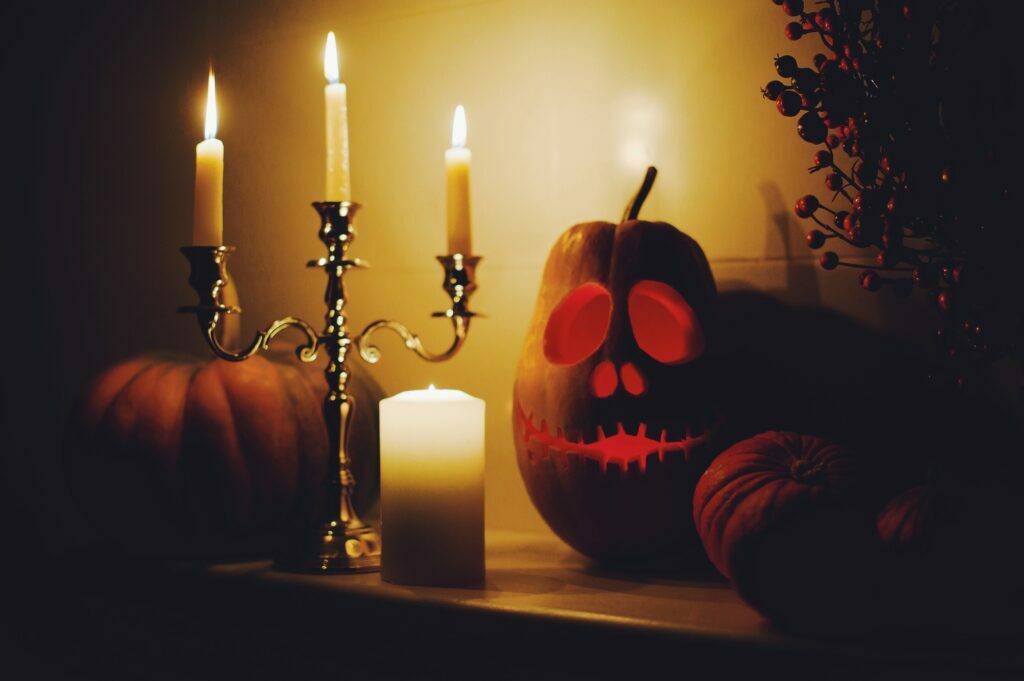Imagine this: Halloween costumes, trick-or-treating, and spooky decorations that send shivers down your spine. Now picture a somber day filled with candlelit vigils, prayers, and rememberances. Both Halloween and All Saints’ Day have their roots in history, but they couldn’t be more different. While Halloween is a night of playful frights and imagination run wild, All Saints’ Day is a solemn occasion to honor saints and loved ones who have passed away. So, what really sets these two holidays apart? Let’s dive in and explore the captivating differences between Halloween and All Saints’ Day.
Halloween
Origin and History of Halloween
Halloween, also known as All Hallows’ Eve, dates back to ancient Celtic festivals. It originated from the Celtic festival of Samhain, which marked the end of summer and the beginning of the dark winter season. During Samhain, Celts believed that the boundary between the living and the dead was blurred, allowing spirits to roam freely on Earth. It was a time for communities to come together, light bonfires, and wear costumes to ward off these roaming spirits.
Celebration and Traditions
Today, Halloween is celebrated on the night of October 31st in many countries around the world. It has evolved into a festive occasion filled with various traditions. One of the most popular traditions is the act of dressing up in costumes. People of all ages, especially children, take pleasure in transforming into their favorite characters or creatures. Halloween parties, haunted houses, and parades are also common during this holiday. Additionally, many individuals enjoy the thrill of watching horror movies or reading spooky stories to immerse themselves in the Halloween spirit.
Symbols and Costumes
Halloween is recognized by its distinct symbols and costumes. Traditional symbols associated with Halloween include witches, ghosts, bats, black cats, and jack-o’-lanterns. These symbols have become iconic representations of the holiday. Costumes are an integral part of Halloween, as individuals dress up as various characters or creatures to engage in the festivities. From spooky witches to superheroes, there is no shortage of creative costumes during Halloween.
Trick-or-Treating
Trick-or-treating is a popular activity during Halloween, especially among children. It involves going door-to-door in neighborhoods and asking for candy by saying, “Trick or treat!” This tradition is believed to have originated from the medieval practice of “souling,” where poor individuals would go door-to-door on All Hallows’ Eve to receive food and prayers in exchange for offering blessings for the souls of the homeowner’s deceased loved ones.
Jack-o’-lanterns
Jack-o’-lanterns are another iconic symbol associated with Halloween. They are carved pumpkins that have a candle or light placed inside to create an eerie glow. The origin of the jack-o’-lantern can be traced back to an Irish folktale about a man named Stingy Jack, who was said to have tricked the devil and was condemned to roam the Earth with only a hollowed-out turnip with a light inside. In Ireland and Scotland, turnips and potatoes were traditionally used, but after the tradition was brought to America, pumpkins became the preferred choice due to their availability.
Haunted Houses
Haunted houses are a popular attraction during the Halloween season. These temporary structures are designed to evoke fear and suspense in those who dare to enter. Haunted houses often feature interactive experiences with costumed actors, special effects, and spooky decorations. They provide a thrilling and immersive experience, allowing people to face their fears in a controlled and entertaining environment.
Popularity and Commercialization
Over the years, Halloween has grown in popularity and commercialization. It has become a multi-billion-dollar industry, with various businesses capitalizing on the holiday’s popularity. Costume shops, candy stores, and party supply retailers see a significant increase in sales during the Halloween season. Additionally, many amusement parks and entertainment venues offer Halloween-themed events to attract visitors. This commercialization has contributed to the widespread celebration and enjoyment of Halloween worldwide.
Halloween Around the World
While Halloween originated from Celtic traditions, it has evolved differently in various parts of the world. In the United States, Halloween is celebrated with great enthusiasm, with neighborhoods adorned with decorations and children going door-to-door for candy. In Mexico, the holiday of Dia de los Muertos (Day of the Dead) has become intertwined with Halloween, celebrating deceased loved ones through festive and colorful traditions. In Asia, Halloween has gained popularity as a fun and trendy holiday, with costume parties and themed events becoming more prevalent.
Religious Perspectives on Halloween
From a religious perspective, Halloween can be viewed differently by different faiths. Some Christian denominations, such as Catholicism or Protestantism, may embrace Halloween as a cultural celebration while focusing on its historical and community aspects. However, other religious groups may have reservations or objections to Halloween due to its pagan origins and associations with occult practices. As with any holiday, personal beliefs and interpretations vary, shaping individuals’ perspectives on Halloween.
Cultural Significance of Halloween
Halloween has become deeply ingrained in popular culture, both in the Western world and beyond. It is a time for creativity, self-expression, and communal celebration. The holiday allows people to step outside their normal routines and embrace the spirit of imagination and fantasy. It provides a sense of unity as communities come together to share in the festive atmosphere. Furthermore, Halloween serves as a significant source of inspiration for literature, music, movies, and art, contributing to the richness and diversity of our cultural landscape.
All Saints’ Day
Origin and History of All Saints’ Day
All Saints’ Day, also known as All Hallows’ Day, is a Christian holiday that originated in the early centuries of Christianity. The exact origins of the holiday are unclear, but it is believed to have been established as early as the fourth century. All Saints’ Day is celebrated on November 1st and is dedicated to honoring all known and unknown saints, martyrs, and faithful believers who have attained heaven.
Significance and Religious Observance
All Saints’ Day holds great religious significance within Christianity. It is a time to remember and honor those who have lived a faithful life and are believed to be in the presence of God. Many Christians attend special church services on All Saints’ Day, where prayers and hymns are dedicated to the saints. The day serves as a reminder of the ultimate goal of every Christian: to strive for holiness and join the company of the saints in heaven.
All Souls’ Day
All Saints’ Day is closely associated with All Souls’ Day, which falls on November 2nd. While All Saints’ Day celebrates the saints and known faithful departed, All Souls’ Day honors all departed souls who have not yet reached heaven. It is a time for prayer and remembrance of deceased loved ones, offering comfort and support to those grieving their loss.
Traditional Customs and Practices
Traditional customs and practices associated with All Saints’ Day may vary among different Christian denominations and cultures. In some communities, individuals may visit cemeteries to clean and decorate the graves of their deceased loved ones with flowers and candles. Churches may hold special services and offer prayers for the souls of the departed. All Souls’ Day is commonly observed with the lighting of candles and the recitation of prayers for the souls in purgatory.
All Saints’ Day Around the World
All Saints’ Day is celebrated by Christians worldwide, although the customs and traditions surrounding the holiday may differ based on cultural influences. In Catholic-majority countries, such as Mexico and the Philippines, the day is marked by vibrant processions, elaborate altars, and festive celebrations. In Eastern Orthodox Christianity, All Saints’ Day is known as the Sunday of All Saints and is observed with special liturgical services and prayers.
Cultural and Societal Impact
All Saints’ Day has had a profound impact on the cultural and societal landscape of Christian communities throughout history. The holiday has inspired numerous works of art, literature, and music, reflecting the reverence and devotion associated with honoring the saints. It has also played a role in shaping societal values by emphasizing the importance of virtuous living and the pursuit of holiness.
Comparison to Halloween
While Halloween and All Saints’ Day are both observed around the same time and have connections to the afterlife, they differ in their origins, practices, and religious significance. Halloween has pagan roots and focuses on a fun and festive celebration through costumes, decorations, and trick-or-treating. On the other hand, All Saints’ Day is rooted in Christianity and serves as a solemn occasion to honor the saints and faithful departed. While Halloween embraces the supernatural and whimsical elements, All Saints’ Day centers around faith, prayer, and remembrance.
Similarities and Differences
Despite their differences, Halloween and All Saints’ Day share some similarities. Both holidays are associated with the commemoration of the deceased and have ties to the supernatural. They also provide opportunities for individuals to express their creativity and engage in communal celebrations. However, their overall tone and focus diverge, with Halloween leaning towards a secular and playful celebration, while All Saints’ Day maintains a religious and contemplative nature.
Religious Perspectives on All Saints’ Day
For Christians, particularly those in Catholic and Orthodox traditions, All Saints’ Day holds immense religious significance. It serves as a reminder of the power of faith, the communion of saints, and the hope of eternal life. The holiday reinforces the belief that the saints and departed faithful continue to intercede for the living and inspire believers to emulate their virtues. While the specific practices and interpretations of All Saints’ Day may differ among denominations, its core purpose remains steadfast in celebrating the lives of those who have attained heaven.
Importance of All Saints’ Day in Christianity
All Saints’ Day is an integral part of the Christian calendar, providing an opportunity for believers to reflect on the lives of the saints and the faithful departed. It encourages individuals to strive for holiness, deepen their faith, and seek inspiration from those who have exemplified devotion and righteousness. By recognizing the saints’ impact and lasting legacy, All Saints’ Day enriches the spiritual journey of Christians and reinforces the belief in the communion of saints as a source of guidance, intercession, and hope.



